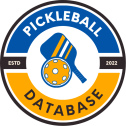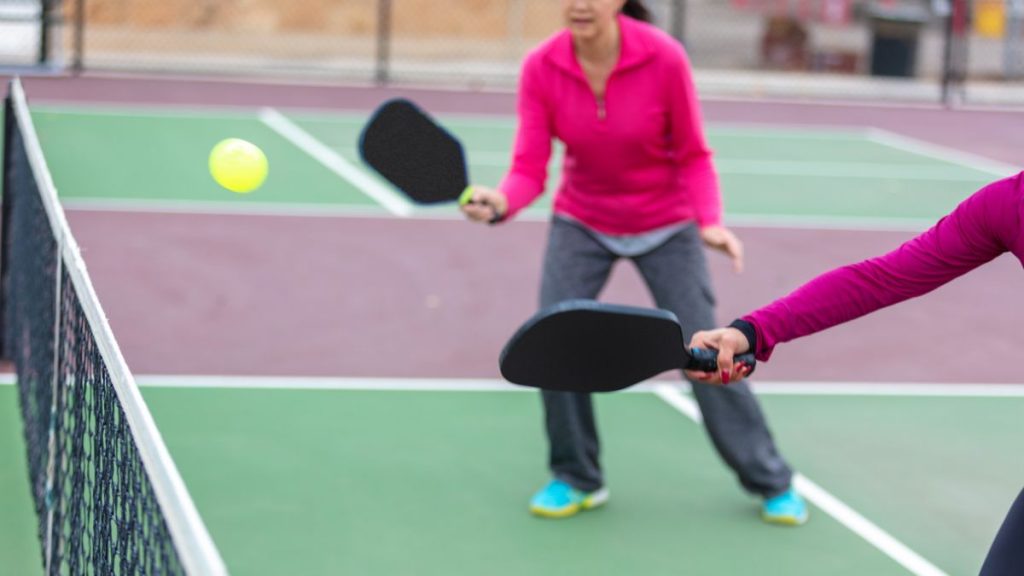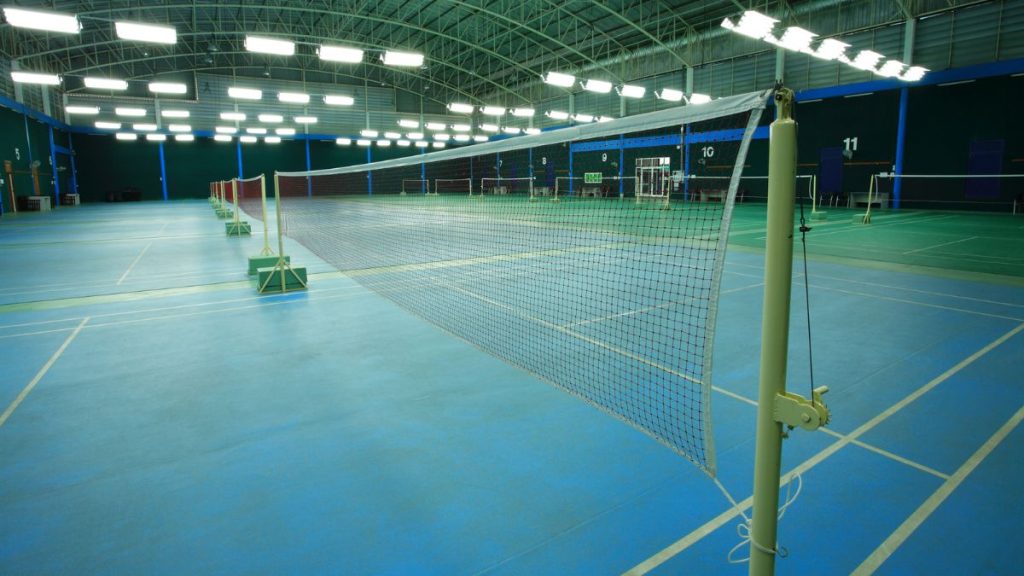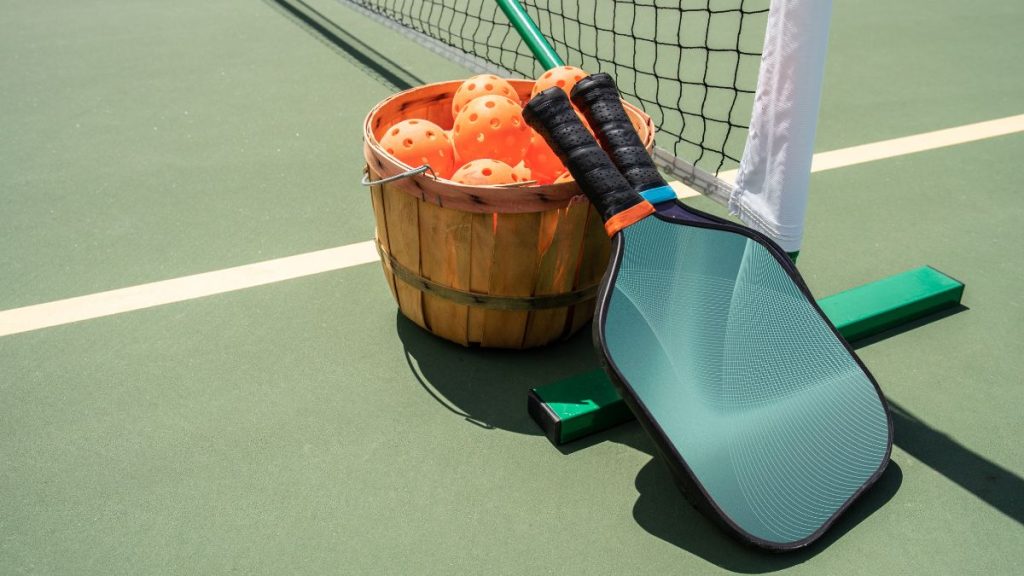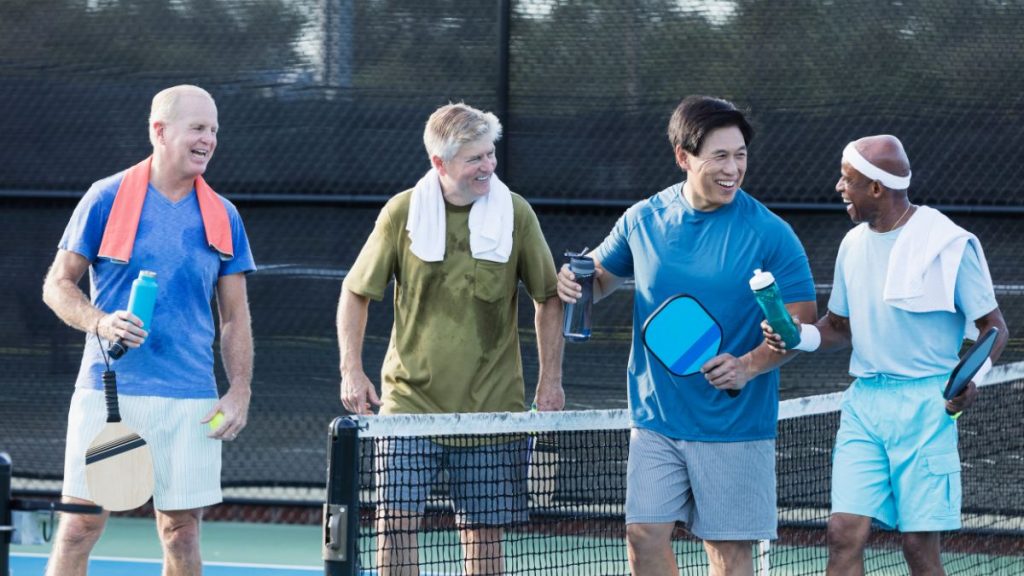Rules matter! If you are unfamiliar with the game, a good way to start is learning the rules in time, you get the skills that come with practice, and you will soon learn to love the game. In this article, we will learn about a specific rule in Pickleball and find out if hitting the ball with your hand is something that can be done in this sport. Can you hit the ball with your hand in pickleball?
When the ball is struck by the paddler’s hand underneath the wrist while still holding the paddle, the hit is considered legal. If the ball strikes any other area of the body, it is considered a fault.
What Is an Illegal Hit in Pickleball?
You want to make sure that every hit is a score and not tossed aside for a fault, so here are some tips on what are the illegal hits in the game.
If a ball that is already in play strikes you, it is considered a fault on your part. This is the case even when it only brushes across your hair. It makes no difference where you are located on the court, either. Though the ball touches you before it lands, even when you’re standing far beyond the boundaries of the playing area, it is still your responsibility.
What Are the 5 Faults in Pickleball?
In pickleball, a breach of the rules is referred to as a fault. When one of the players breaks one of the regulations, the pickleball is said to be dead, and the rally comes to an instant halt. The individual or team that does not break any rules will come out on top in this rally.
1. Hitting the Ball Into the Net
It is a violation of the rules for a player to hit the ball toward the net in such a way that it does not cross over to the opponent’s half of the court but rather goes straight into the net. The error is made when the ball first makes contact with the ground. The team who made a mistake is penalized by losing the rally, and according to who is serving, they could also lose a point. This kind of error may take place during any shot, including the service, the return of the services, or any shot that comes later.
2. Non-volley Zone Faults
If a player wants to smash the ball or strike it overhead before it bounces, they are not allowed to walk into the area marked as a non-volley zone, also referred to as the kitchen. The kitchen is located in the 14-foot section next to the pickleball net and extends 7 feet on each side of the net.
To commit a fault by volleying the ball while staying in this region violates the rules. Furthermore, it violates the rules if they touch the kitchen barrier or go over it before, during, or immediately after sending the ball a shot. This may happen at any point in the play.
Therefore, the ball must first bounce before being struck while positioned in this 7-foot area on the court for you to strike the ball.
3. Hitting the Ball Out of Bounds
If a ball goes “out” or falls beyond the arena’s borders, it is considered a fault, and the rally will end. This regulation is identical to the rules that are used in tennis. The point at which the pickleball center comes in contact with both the court is referred to as the “point of contact.” At this stage, the goal is to decide whether the ball is within or outside.
When it pertains to the borders on the other side of the court, especially the baselines and the margins, the ball is regarded as “in” if it reaches the line. This rule applies to both the baselines and the sides. To reiterate, “on the line” is synonymous with “in” in pickleball, just as in other racket sports.
4. Not Adhering to the Two-Bounce Rule
Pickleball is the sole sport played with a racquet or paddle in which each team must let the sphere bounce once between the first two of each point. The service and the return of the services are the first two strokes of each point in a tennis match. To avoid a fault, the ball must be permitted to bounce between these two strokes.
Therefore, if you are on the team responsible for returning the serve, you are required to let the ball bounce regardless of how far or near the boundary the serve falls. For this reason, excellent serving teams will serve deep.
On the opposite side of the court, the serving team is required to allow the return on serve bounce. This is also why the depth of your return serve strokes should be prioritized. But if you’re starting off, this is a challenging one. After you have served, it is simple to let your reflexes take over and rush up towards the kitchen line to make a play with the ball.
If the returned serve is struck deep (which happens very often as a result of this regulation), and the responder goes charging up, but doesn’t leave enough space to let the ball rebound before hitting it, then the point is lost.
5. A Ball in Play Strikes a Permanent Object – Like a Person
According to the Pickleball Rulebook, if the ball touches or hits a permanent object, such as a post, fence, or bench, before bouncing, the unit that has hit the ball admits a fault and loses the rally. This rule applies when the pickleball does not bounce after making contact with the object.
If the ball strikes a permanent object, like the net pillar or even a human, before this bounces on the opposite side of the net, it is a fault, and the rally is given to the team that was not the hitting team. This is essentially what all these two laws are stating.
Nonetheless, if the ball crosses the goal and settles in the correct position but then it touches the permanent item, such as an opponent’s leg or shoe, this is considered a fault, and the point will be given to the team that made the hit.
Is a Double Hit Legal in Pickleball?
A double-hit occurs any moment a ball is struck twice with one or more participants during a return, as specified in Article 3.A.8 of the Pickleball regulations. This may be done by one player or by many players.
To an untrained eye, that seems like an illegal shot, and if that’s the case, the individual who hit the ball should be penalized for their mistake. If the “double-hit” or “carry” was the result of one constant movement — without the need for a 2nd deliberate swing or move — then it is a lawful shot even though it hit someone’s paddle twice in the same way swing. However, before you call a fault on yourself because of a “double-hit” or “carry,” comprehend this: If the “double-hit” or “carry” was the consequence of one continuous motion, then it is not a legal shot.
Can You Serve Out of Your Hand in Pickleball?
Serving the pickleball may be executed in two different ways. First, the Pickleball volley serves. A volley serves in pickleball consists of releasing the ball with a throw or a stroke and then hitting it with the paddle without letting it bounce (also known as the volley the serve). For the most part, this volley serve is used in pickleball matches.
An alternative serving technique is the drop serve, which is used in pickleball. The drop serve was added to the pickleball official rulebook to accommodate players with physical impairments (considering a player with one arm). On the other hand, the pickleball drop serves as a “provisional rule” in the Official Rulebook, meaning that it is now authorized but may be altered or abolished based on its impact on the sport. Drop serves in pickleball are executed by releasing the ball from above shoulder height, either by hand or by letting it roll off the paddle, and then striking the ball with the paddle after it has bounced once.
Final Thoughts
I hope this article provided a little clarity as to what is a go and no go in the field. It may be a lot to take in at first, but trust me, once you have put in the number of hours you are in the court, this will be just like breathing. Remember, you must first learn the rules before trying to bend them.
